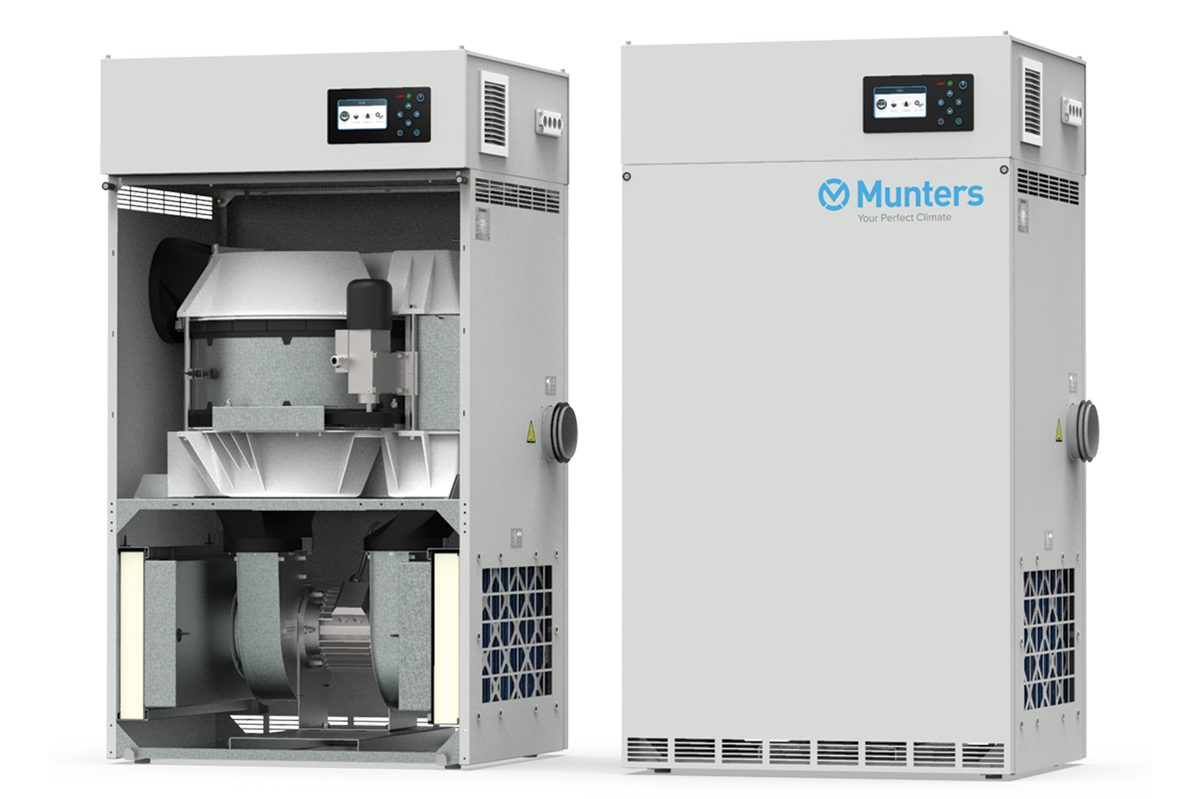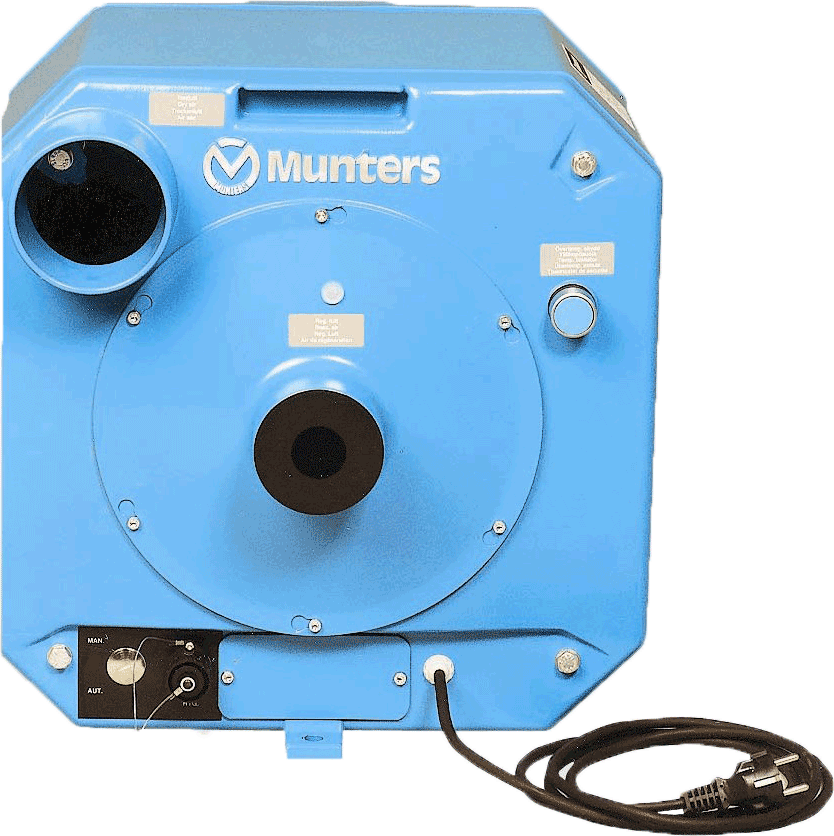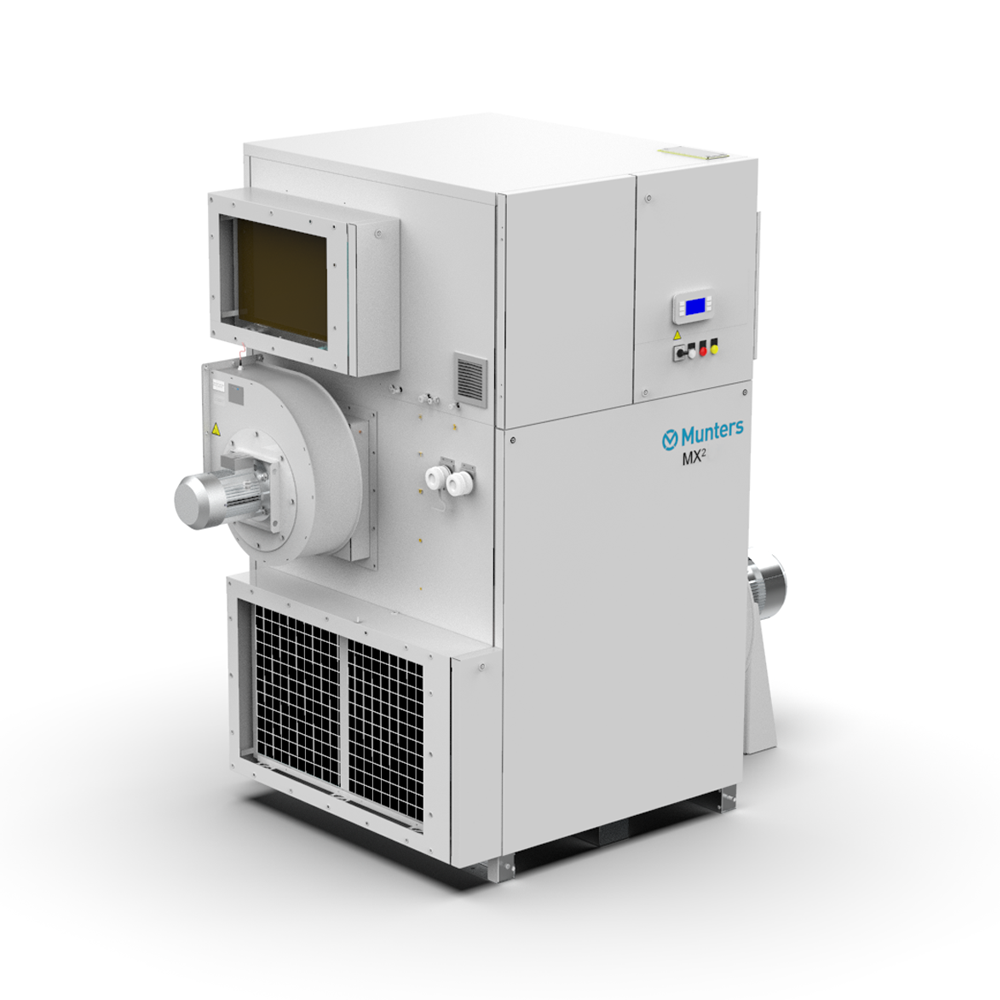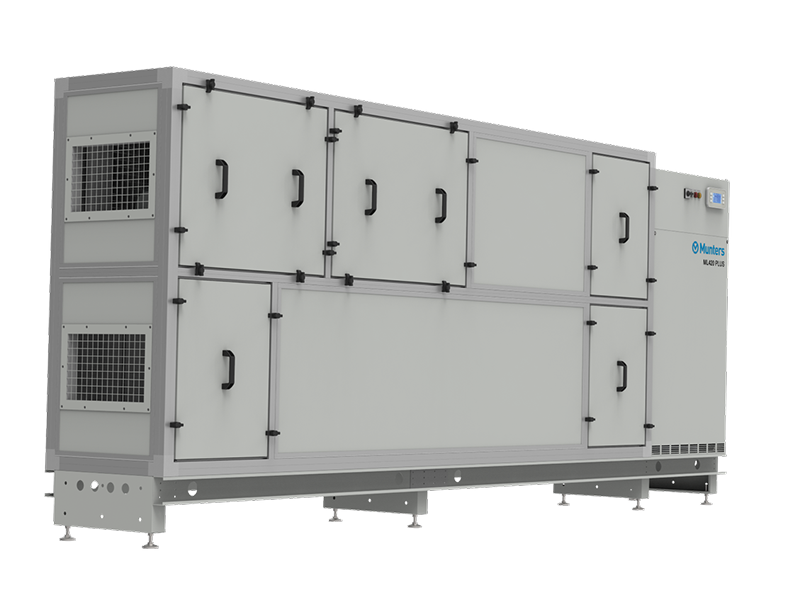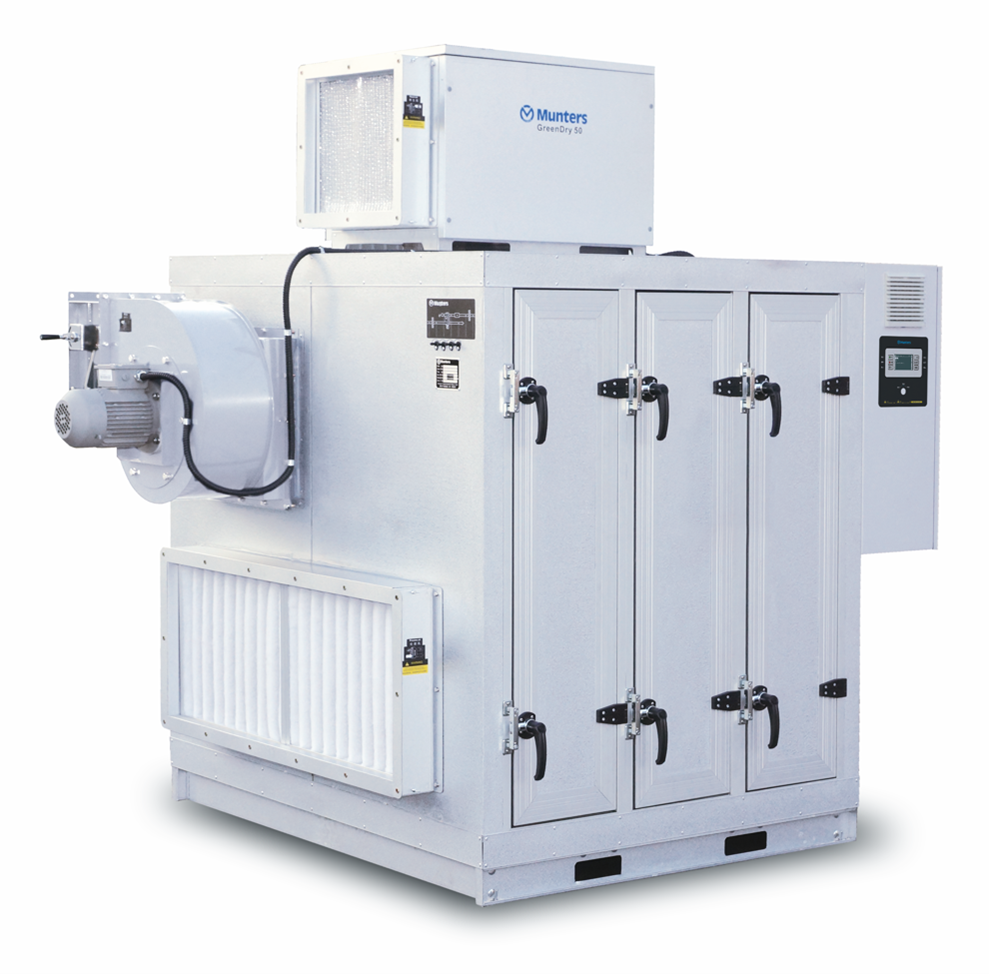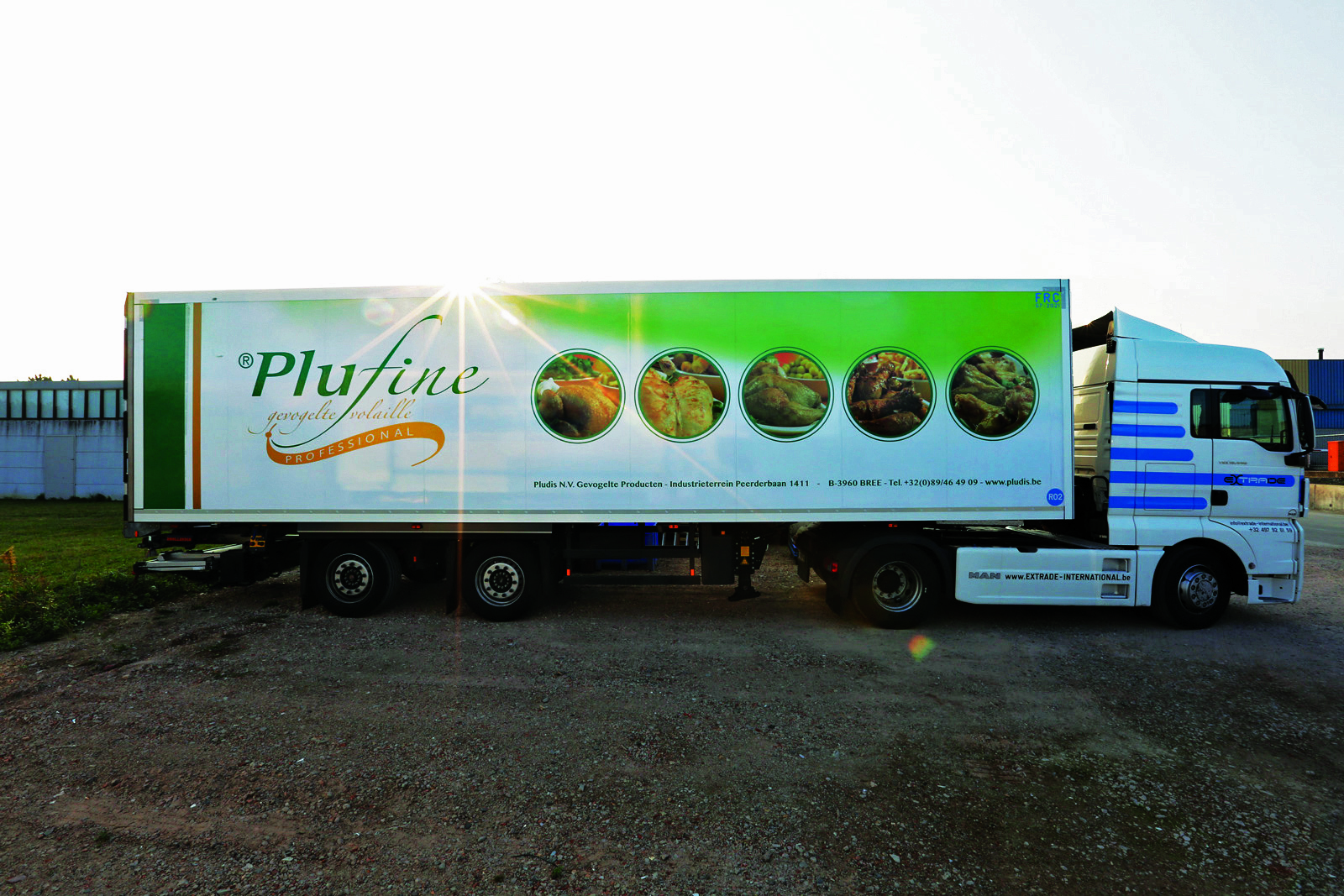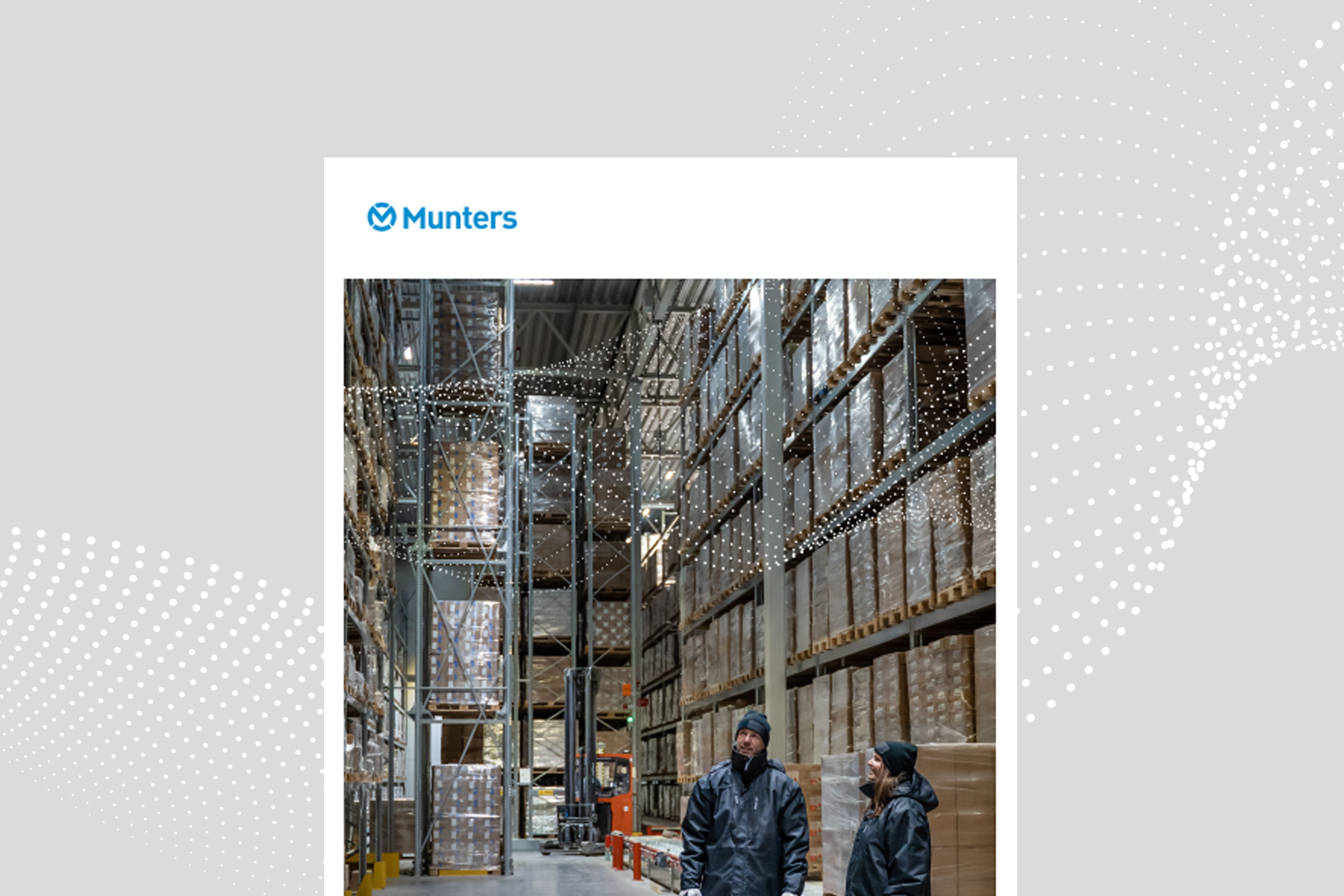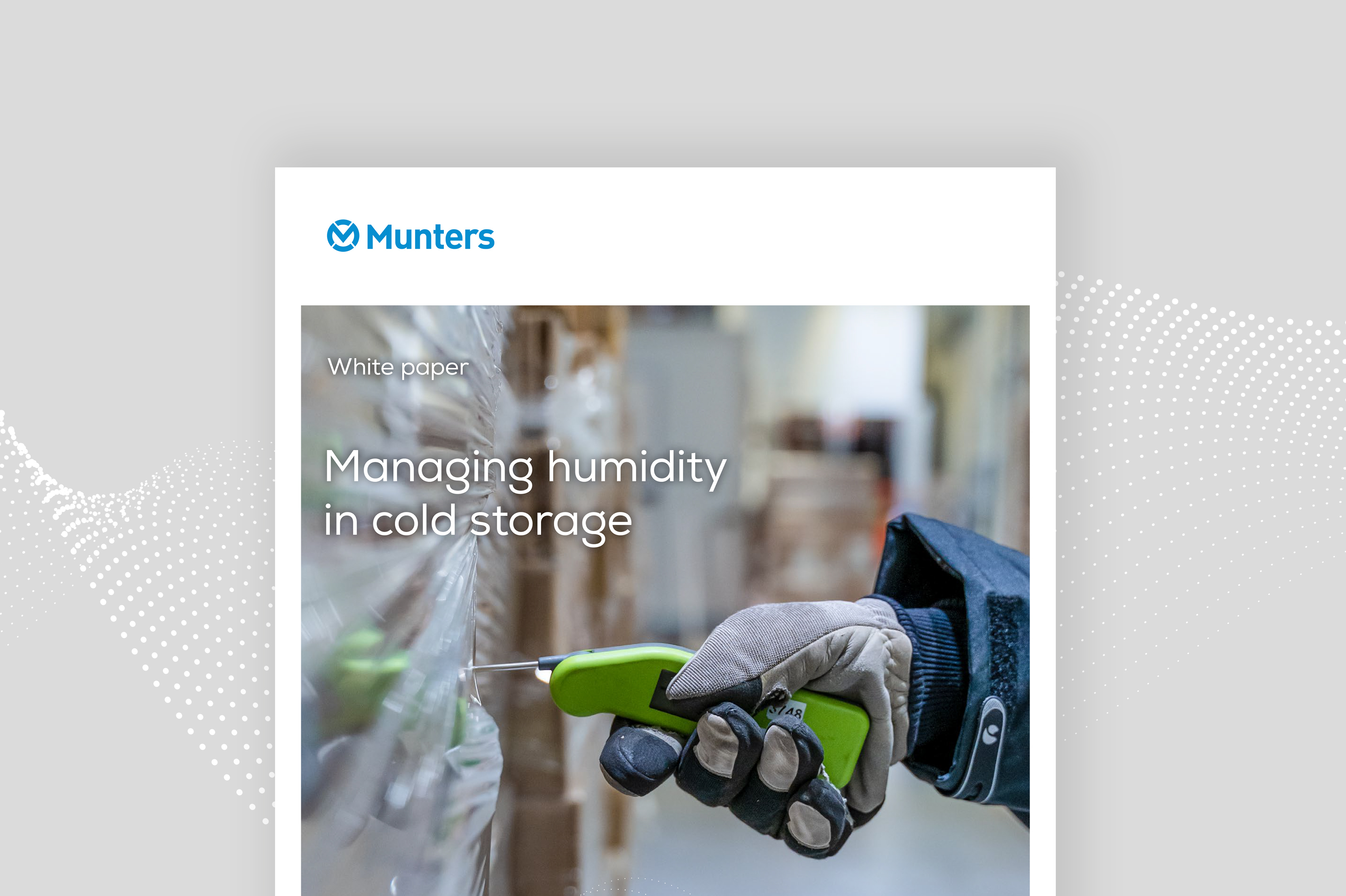Uncontrolled humidity is a critical challenge for cold storage operations
Indian humidity control in cold rooms and chilled storages are critial. High humidity, seasonal monsoons as well as quickly shifting temperatures are especially challenging. In many regions within India, the tropical and coastal zones in particular, frequent defrosting is considered to be the most significant among operational cost for cold storage facilities. A rise in electricity consumption connected to defrosting cooling coils, eliminating fog and condensation is a fact for many cold store operators. This rise in combination with the increased energy prices in India, explains the expensive operational costs. The slippery floors and other hazards also means disrups for the workers as well as limited ability to protect the stored goods.
How humidity issues for cold rooms and chilled storages differ
In cold rooms operating around -0 °C, warm and humid air which is common in many parts of India, enters the room and leads to rapid freezing in contact with cold surfaces. This results in ice buildup on floors, shelves, ceilings, and cooling coils as well as fog that reduces visibility.
In chilled storage areas (+0 °C), high humidity causes condensation, which can damage packaging and compromise the quality of stored goods. The warm, moist conditions also promote the growth of mold and bacteria, posing serious risks especially for food and pharmaceutical products.
With excess humidity in your cold or chilled store, you risk:
- Operational efficiency, as forklift trucks get stuck and barcodes are damaged.
- Worker efficiency, as fog reduces visibility and time is spent on removing frost.
- Worker safety, due to slippery floors and risk of falling ice.
- Excess energy use – Frost buildup on cooling coils drives up energy consumption.

"The condition of the cold store has greatly improved, and we are now snow and ice free for the first time in many years. We no longer have issues with the refrigeration equipment icing, blocking up and the cold store is now the best it’s ever been for excessive ice and snow build up on the walls and packaging."

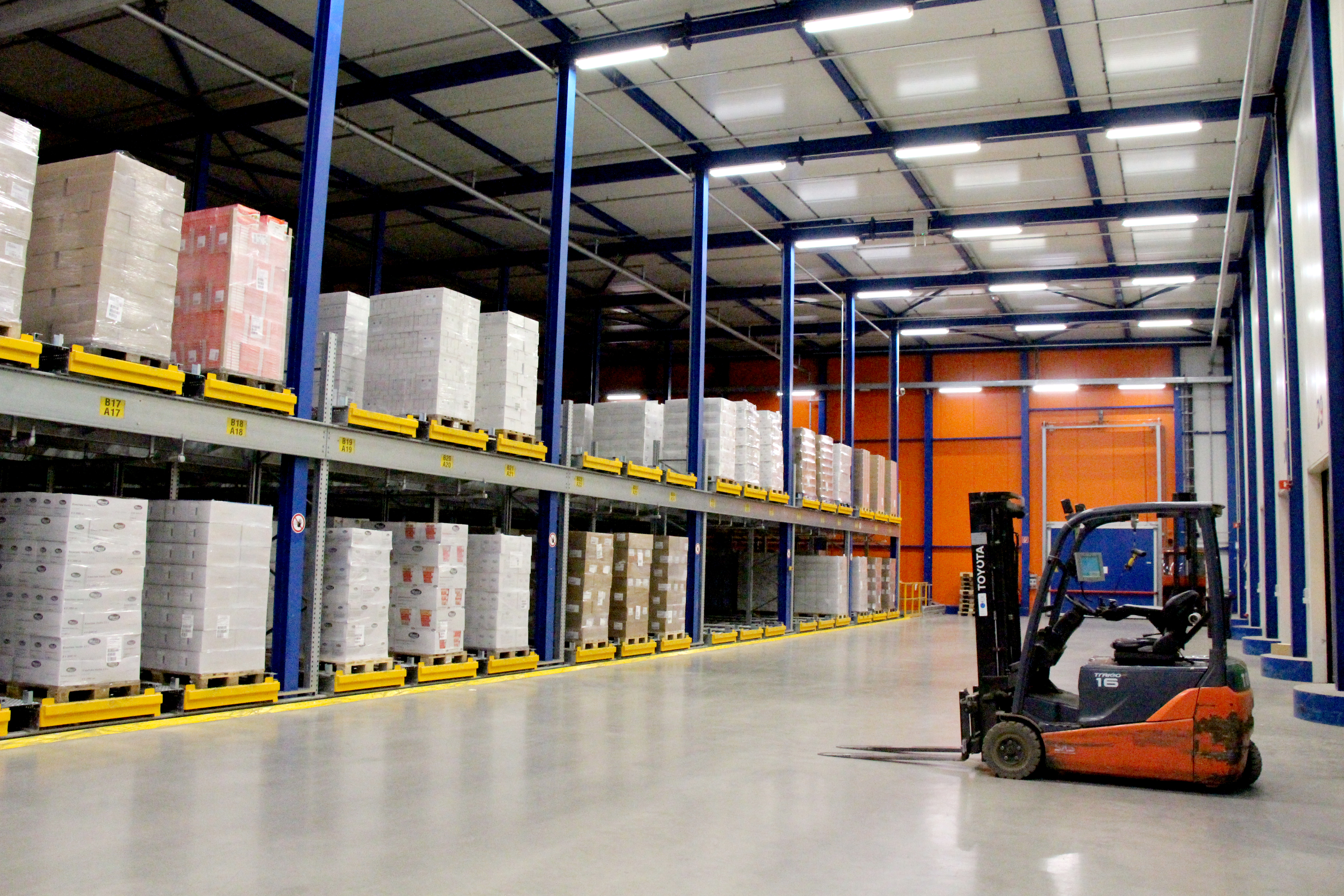
A cold store should not contain ice
If your cold store has a moisture problem, you probably battle some of these issues every day:
- Ice and frost buildup on surfaces and packages, hindering forklift trucks
- Frozen evaporator coils, reducing their cooling efficiency
- Barcode scanners don’t function correctly, affecting operational efficiency
- Fog and reduced visibility
- Icy floors and increased safety incidents
- Frequent defrosts and maintenance needed
- Higher energy consumption
But there is no reason to accept this situation. With dehumidification, you will eliminate ice from your cold store.
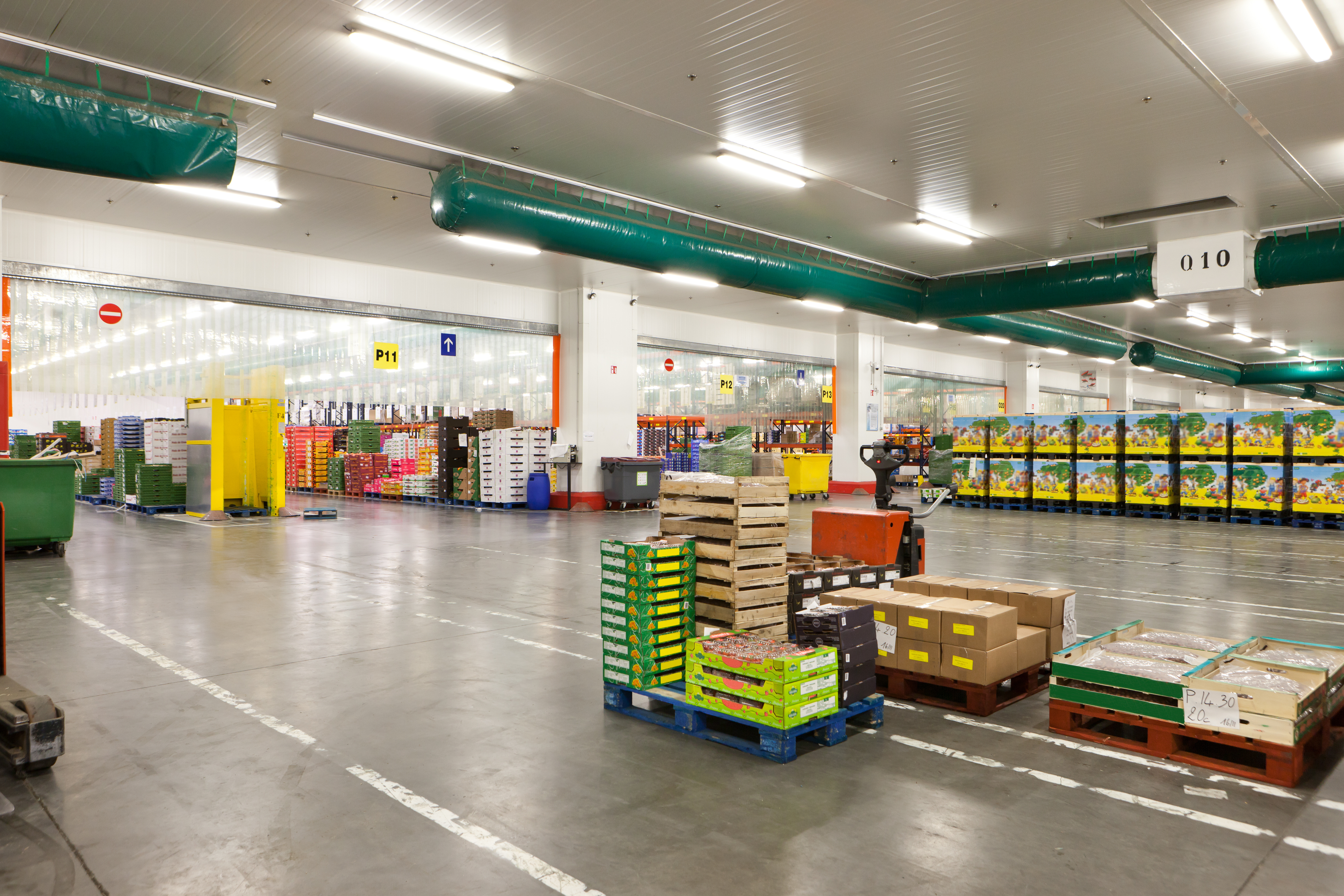
A chilled warehouse should not be humid
In a refrigerated, chilled warehouse, excessive humidity and condensation risk operational efficiency, as well as the quality of the products stored. Signs of excessive humidity include:
- Condensation on floors, walls, and the products
- Fog and reduced visibility
- Soggy cardboard cases that collapse when handled
- Mold and mildew growth
- Poor product quality and increased product waste
Caring for sustainable solutions by seeking to reduce product waste, it’s important to focus on the source of the problem – the moisture. With dehumidification, you will keep the relative humidity at optimal levels for your facilities and the products stored.
Industrial dehumidification for cold stores and chilled warehouses
Want to know how you can benefit from our desiccant dehumidification solutions?
Benefits of dehumidification for cold rooms & chilled warehouses in India
In India’s diverse climate, especially in coastal and tropical regions, high ambient humidity is a persistent challenge for cold storage operations. With a desiccant dehumidification system, you can effectively remove moisture from your cold room as well as chilled warehouse and reduce its impact on energy efficiency.
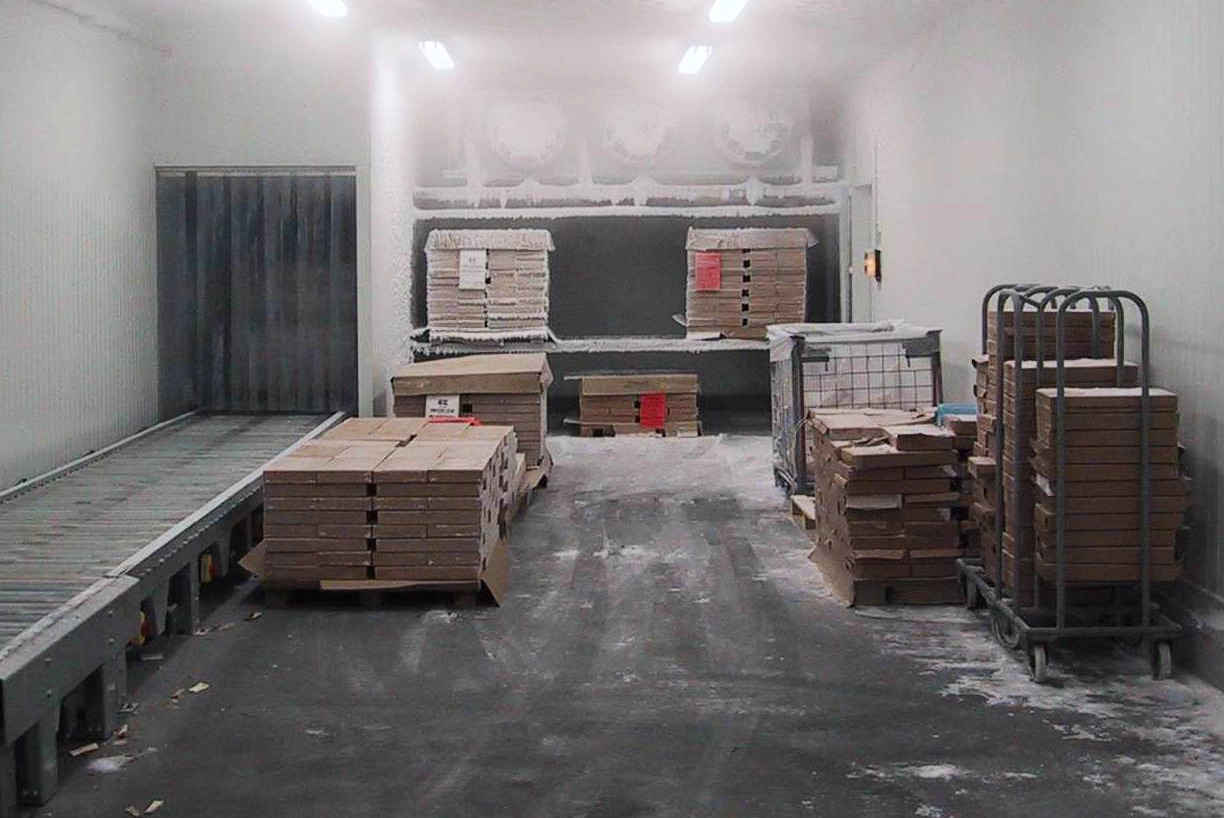
Up to 5% in energy savings with desiccant dehumidification
Energy for cooling represents one of the largest expenses that operators of cold storage facilities face, and humidity only makes cooling more expensive.
High humidity can increase cold storage energy usage in a few different ways:
- When moist air enters a cold room, it will condense and freeze on every surface it can. To remove ice, many facilities use heater stripes in areas such as doors and floors. While they do prevent ice, using these in cold storage requires more energy to power the heater stripes, and also increases cooling loads.
- One of the first places affected by frost buildup in a cold storage warehouse is the evaporator coils of the cooling system. As ice thickness increases, cooling efficiency plummets and energy usage increases.
- Even if the evaporator coils are frost free, high humidity can still increase the energy consumption. It takes more energy to cool moist air because both the sensible heat (to lower the temperature) and the latent heat (to condense and remove moisture) must be removed. The higher the relative humidity, the more energy it will take to cool it.
With a desiccant dehumidification solution, moisture will be removed from your cold room or refrigerated warehouse, and thereby reduce the energy consumption.
Munters market-leading dehumidification solutions
Munters has the expertise to help you find the optimal solution that will increase operational efficiency and save big on energy. The solution might vary depending on your facility´s design. Sometimes the most efficient solution is to remove the moisture already in the cooling dock, and sometimes it’s better or necessary to focus on the cold room.
Inside the cold store: Munters IceDry 1400 AirC
Protect your cold storage from high humidity with the Munters IceDry 1400 AirC. The IceDry was designed specifically to remove moisture in cold storage facilities, refrigerated warehouses, walk-in coolers, and freezers. The IceDry works by removing moisture at the source – from the air in your cold storage, or infiltrating air at docks and anterooms.
The Munters IceDry offers industry-leading performance and energy efficiency in a stand-alone system that can be installed directly inside your cold storage. The system can operate independently in smaller cold rooms, or multiple units can be installed to protect larger warehouses.
Munters trustworthy ML series or MX series of dehumidifiers are the recommended choice when the situation calls for the dehumidifier to be placed outside of the actual cold room.
This highly customizable system is available in many sizes and configurations, engineered to meet your needs. From a smaller ML stand-alone unit or a medium-sized PLUS system, to a complete MX PLUS system for larger facilities, Munters offers energy-efficient control of temperature and humidity.
